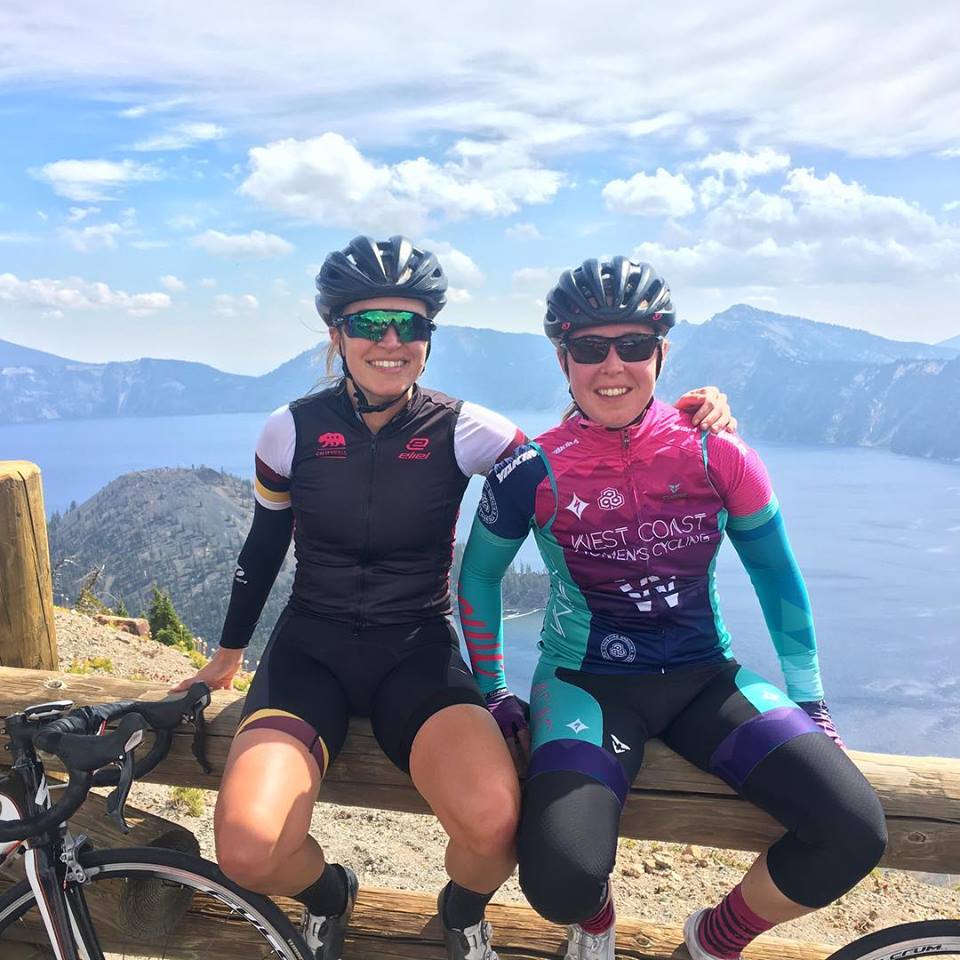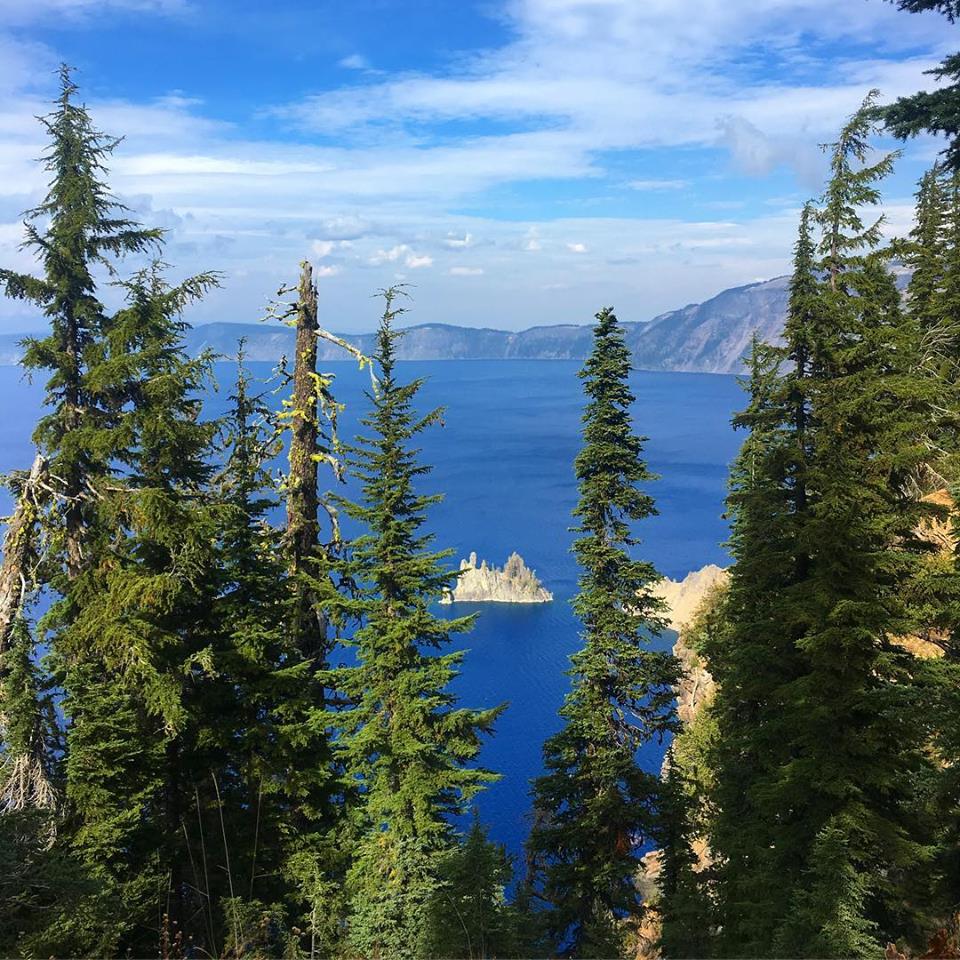Non-pedaling people sometimes wonder why we ride bikes for miles when we could simply get in a car and drive past the same sights.
Put them on a bike and send them to Crater Lake’s Ride the Rim.
This completely free event allows cyclists to ride around the United States’ deepest lake on a road closed to cars, and it’s everything that anyone loves about cycling – the suffering, the reward, the beauty, the adrenaline, the weather, the epic views, the snacks, the friends you make.
Closed to vehicles for two days total on back-to-back weekends in September, Crater Lake National Park’s rim road is only 33 miles, but it’s a formidable elevation gain of 4,000 feet all while riding at around 6,000 to 7,000 feet.
(Technically, 25 miles of the 33 miles are closed to vehicles, but really, who’s counting? A whole 25 miles of car-free roads around one of the most beautiful national parks in the country? Might as well be the whole thing.)

What makes Crater Lake so epic
Crater Lake, at a depth of 1,943 feet, sits in the belly of a dormant volcano in southwest Oregon. Fed entirely by rainfall and snow, scientists consider it to be the cleanest and clearest large body of water in the world.
This, after its 12,000-foot volcano Mount Mazama blew its top 7,700 years ago in one of the largest eruptions in the last 10,000 years. Out of total destruction comes a well-preserved natural purity that is becoming increasingly scarce to find.
Later eruptions formed Wizard Island, a cinder cone that rises from the water. The park has an abundance of fascinating volcanic features, including a second rocky island, the Phantom Ship, which is worth stopping to see from various viewpoints.
Experiencing Crater Lake from the saddle allows you to soak up views of this truly beautiful lake, its surrounding forest and fresh mountain air while completing a challenging loop and feeling a sense of accomplishment – it’s the whole package.

Ride notes
Starting from Steel Visitor Center, the park’s headquarters, you can park, sign up (it’s free), meet eager and kind volunteers and load up on snacks before heading out. We did all of the above.
The road is closed to vehicles from 8 a.m. to 6 p.m., so you can ride at any time during that window – there is no organized start and finish, so you’re free to do it your way.
Choose your clothing wisely. The dates of the 2018 ride were Sept. 8 and 15. We chose Sept. 15, and it was pretty chilly just stepping out of the car. At noon. But you know you’ll be climbing. The other side of the coin: You’ll be descending. I chose a vest, arm warmers and full-finger gloves. It seemed to do the trick.
Out on the road, it’s an immediate climb heading west around the rim road, the first part being with cars – great to get it out of the way first. You’ll tackle four major climbs on the loop, this being the first.
Five rest stops provide sustenance, bathrooms, friendly volunteers and a chance to take even more photos.

You’ll see diversity in cycling abilities and bikes. I was shocked to see someone on a commuter bike and a skateboarding helmet fly past me on a descent. I saw everything from a mountain biker descending toward me and giving me a “YEW!” to a tandem commuter bike going up a dirt trail to get a view of the Phantom Ship.
To fellow bike racers, riding alongside a variety of cycling abilities brings about a touch of nerves, especially on some of the descents, but with so much room on the road and no cars, this wasn’t too much cause for concern.
The full ride takes longer than you would think – most complete it in three to four hours. This is due to elevation, elevation gain and stopping to take photos. It would be difficult to do this ride without pulling over to admire the beauty of Crater Lake from every angle.
Know that before and after the ride, you’ll be driving about an hour and a half minimum in each direction (worth it) unless you can find a closer place to stay, like a campsite. We stayed in Bend, Oregon on our way south from Portland. If coming from the south, Klamath Falls is the closest larger city, only a 45-minute drive.

Growing Ride the Rim
Ride the Rim originally began as “Vehicle-Free Days,” but motorists mistook it as free admission to Crater Lake. As great as the National Park Service is at all that it does, it’s strong suit isn’t branding.
But Discover Klamath Visitor & Convention Bureau teamed up and provided support to NPS in 2015 to enhance branding, marketing, advertising and logistics.
“I heard about it from a couple of friends who have done in the past and I thought it would be a really fun way to experience Crater Lake,” said Christina DeArment, who traveled from Portland with three friends to do the ride. “I dragged these guys because they are my yoga friends and suffer buddies. We ski and do other things together so I thought they would be down to do it. They only whined a little bit.”

The group started at noon and finished close to 4 p.m. after suffering a broken chain. A mechanic at one of the rest stops fixed it.
“I thought it was challenging but it wasn’t too challenging. I still enjoyed it,” said Corey Kaster. “It was fun.”
Raena Rodgers, marketing manager for Discover Klamath Visitor & Convention Bureau, said most people she talks to at the ride can’t believe it’s free.
“They are really enjoying experiencing Crater Lake that way, stopping and taking in a view of the lake,” Rodgers said.
Rodgers said some riders do two to three laps.
By the numbers
Total participants from both days: 3,235
States represented: 39
Oregon: 34%
California: 10%
Washington: 7%
International: 1% (Canada and Germany)
